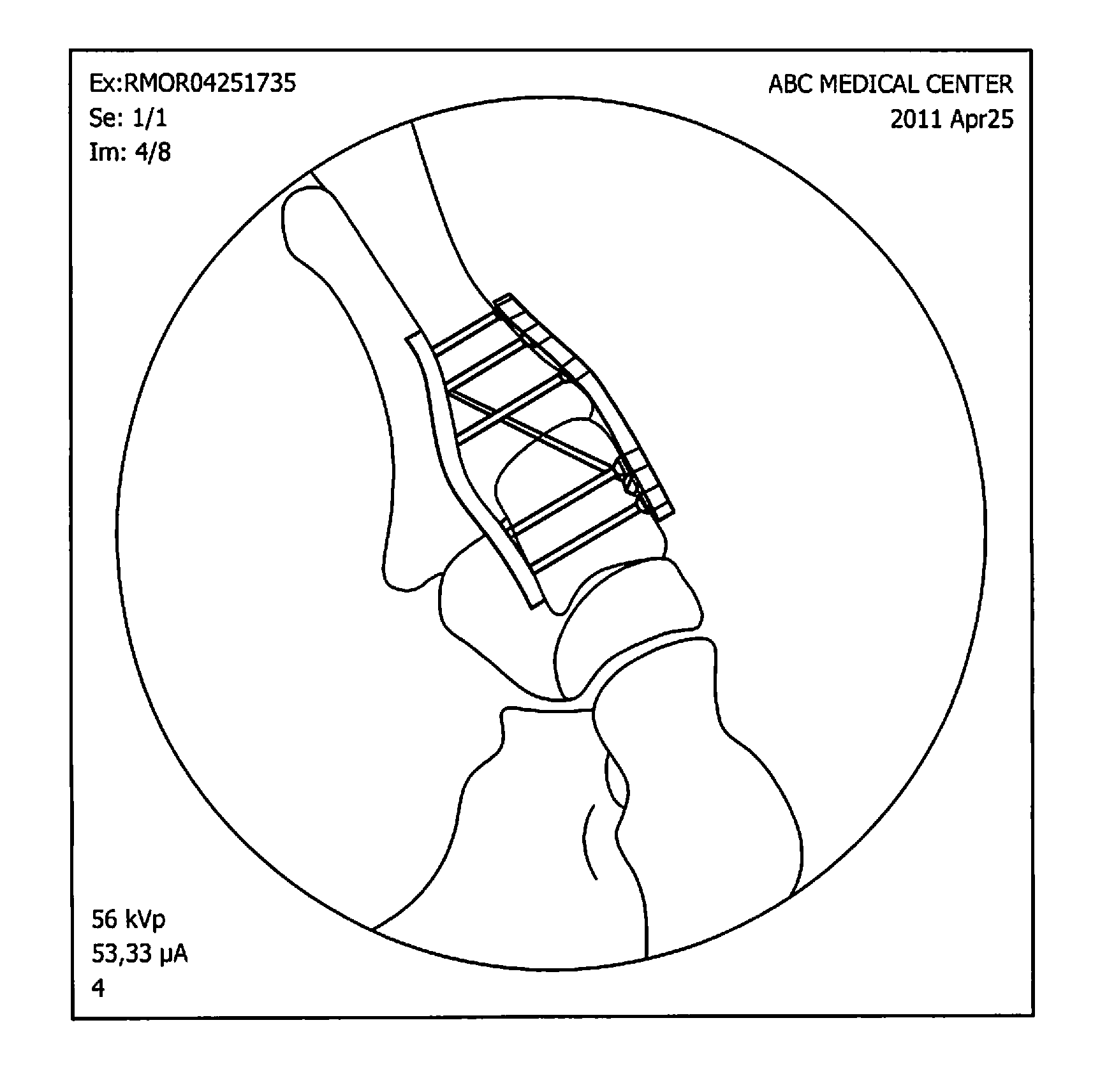Locking Plate with Screw Fixation from Opposite Cortex
a technology of locking plate and opposite cortex, which is applied in the field of locking plate, can solve the problems of undesirable dissection of the attachment technique, difficulty in placing screws from the bottom,
- Summary
- Abstract
- Description
- Claims
- Application Information
AI Technical Summary
Benefits of technology
Problems solved by technology
Method used
Image
Examples
Embodiment Construction
[0028]Referring generally to FIGS. 1A and 1B, a new device is disclosed for supporting a bone 100 (e.g. a bone in a human foot or hand). The device includes a locking plate 102 that is placed at a tension side of the bone 100 and that is attached to the bone by two or more fasteners 104 (e.g., special screws) placed into the bone 100 from a side opposite the locking plate 102. While it is envisioned that some or all of the fasteners 104 may extend directly from the side opposite the locking plate, it is also envisioned that some or all of the fasteners 104 may extend at various angles from the side opposite the locking plate 102. Stated differently, the fasteners 104 need not be perpendicular to a longitudinal axis of the locking plate, and may extend from any region of the bone 100 that is opposite the tension bearing side of the bone 100. Additionally, it is envisioned that one or more heads of the fasteners 104 may protrude (e.g., entirely or partially) above the surface of bone ...
PUM
 Login to View More
Login to View More Abstract
Description
Claims
Application Information
 Login to View More
Login to View More - R&D
- Intellectual Property
- Life Sciences
- Materials
- Tech Scout
- Unparalleled Data Quality
- Higher Quality Content
- 60% Fewer Hallucinations
Browse by: Latest US Patents, China's latest patents, Technical Efficacy Thesaurus, Application Domain, Technology Topic, Popular Technical Reports.
© 2025 PatSnap. All rights reserved.Legal|Privacy policy|Modern Slavery Act Transparency Statement|Sitemap|About US| Contact US: help@patsnap.com



